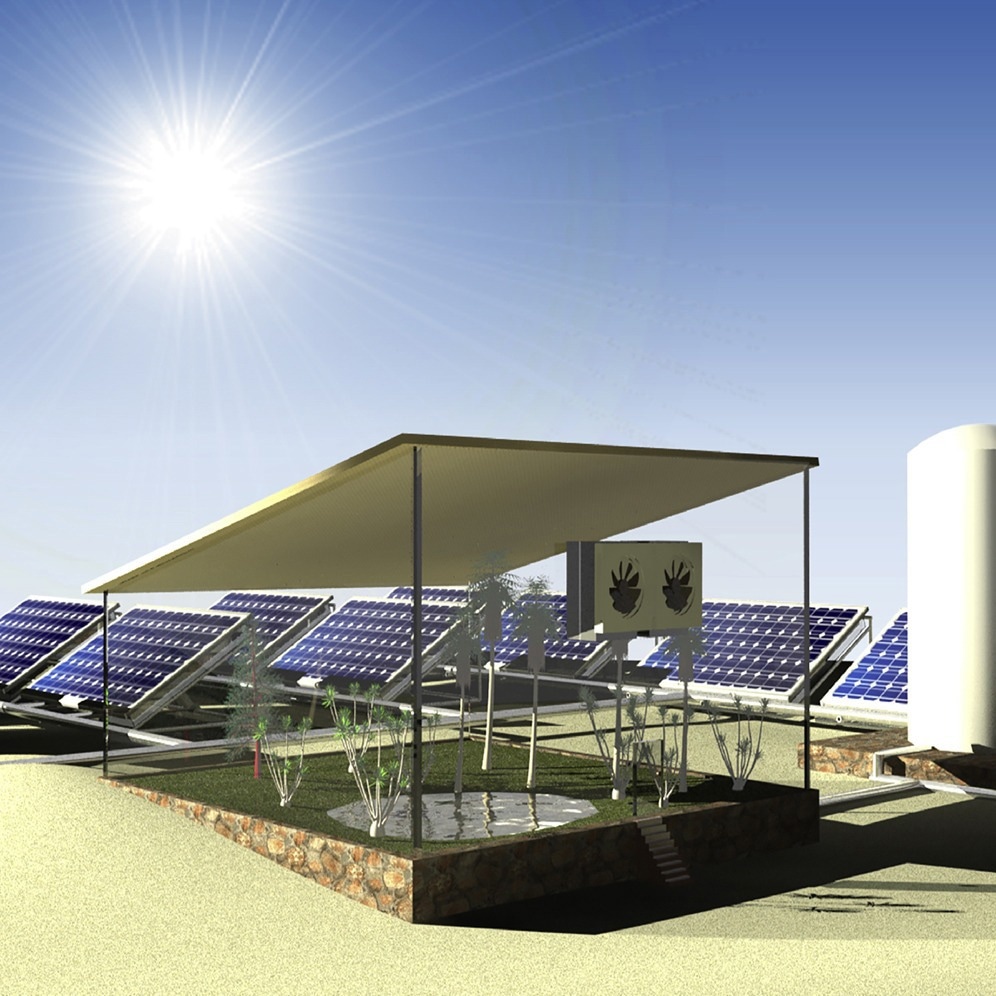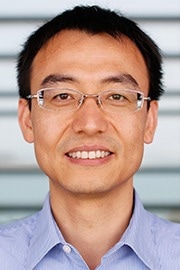AZoCleantech speaks with Dr. Peng Wang from King Abdullah University of Science and Technology about his research into developing a self-sustained and solar-driven, integrated water-electricity-crop co-production system. This will provide an economcial and sustainable strategy to enhance food and water security for people living in dry-climate regions.
The centralized production of electricity, water and food, paired with long-distance transmission and transportation, is expensive and sometimes impossible for off-grid communities. What inspired your research into developing a water-electricity-crop co-production system?
Until the age of 18, I lived in a small village in Western China where we did not have access to running water inside our home. We instead had to fetch water from a nearby well. Thus, I soon became very aware of the issue of water scarcity. On the other hand, food is another necessity for human survival, in addition to water, which is also in short supply in arid and semi-arid regions. Thus, I decided to develop a water-electricity-crop co-production system to help overcome or at least help overcome these issues.
Your novel system, known as WEC2P, has proven efficient in generating electricity and producing water for crops in arid regions. Can you give an overview of how this device works?
A hydrogel water vapor adsorbent is placed at the backside of the PV in the WEC2P system. In the evening and at night, the hydrogel absorbs water vapor and during the day, the PV heat drives the absorbed water to evaporate out of the adsorbent. The vapor is condensed in an enclosed chamber to produce water. Water is then diverted to a crop-growing unit.
Our paper, for the first time, presents an integrated system that would simultaneously produce electricity, water, and crops utilizing a slightly modified PV panel. The system is fully solar energy-driven, and the water essentially comes from the air.

Image Credit: Renyuan Li
While there is no shortage of sunlight to power the solar cells in these arid regions, a huge amount of excess heat is generated by the photovoltaic cells, which reduces their energy efficiency. How did you overcome this challenge?
The hydrogel vapor sorbent adorbs water vapor from the air at night and stores water inside it. The next day, when the sun comes up, the solar panel is heated up. The heat naturally flows inside the vapor sorbent and drives water to evaporate. In PV cooling mode, the water evaporates into the open air (with the chamber open). This is similar to human sweating. We sweat to reduce our body temperature in hot weather or when we do exercise.
When the chamber is closed, the water evaporates into an enclosed space, and the vapor condenses, which produces freshwater. The water is then used to help support crop growth.
A fraction of the world's population, typically in dry-climate regions, still does not have access to clean water or green power. How does this device help establish a decentralized approach to food, water and energy security to generate electricity and produce water for remote, off-grid communities?
The amount of water in the air is 6 times all water in all rivers on Earth. So air is a sustainable alternative water source. WEC2P utilizes the atmospheric water vapor to produce both freshwater and at the same time, it helps the same PV produce electricity. Thus, it provides a decentralized approach to simultaneously producing electricity, water, and crop in one setup. This novel approach shows great promise and will undoubtedly help facilitate the obtainment of the United Nations Sustainable Development Goals (SDGs).
The WEC2P may represent a meaningful contribution to the global water-energy-food nexus. ]]Please can you give an overview of what this is and how your device will contribute to the nexus? What are the benefits of this novel energy system?
The system is very energy efficient, fully solar energy driven, and low-cost once it has been suitably scaled up. It simultaneously produces electricity, water, and crops.
How does this system compare to conventional solar cells, particularly in dry, arid regions?
WEC2P produces water, in addition to electricity, and helps to support crop growth. WEC2P, due to its design, also increases the electricity output of the PV cell.
How did you test the efficacy of your fully solar energy-driven device, and what were your results?
We tested the efficacy of our device during the summer in Saudi Arabia. We set up a small plant growing unit (with a cover to shield the very strong sunshine at noon). The results were very promising, providing a very successful proof-of-concept for WEC2P.
Did you come across any challenges during your research, and if so, how did you overcome them?
Growing crops was challenging in the beginning. However, after some initial struggle, our team managed to overcome this issue.
Having proved the concept and commercialization potential of your device, what are the next steps for your research? What equipment would be needed to achieve these next steps?
The WEC2P is still in the early stages of its development: the dimension of the deployed prototypes was ~0.6×0.3 m2. I am confident that the system can be manufactured economically. For such a system to be widely applied, the production cost will have to be significantly reduced. We are not there yet, however, we are working on optimizing the system’s performance and at the same time, gradually and economically scaling it up.
We are looking forward to working with potential industrial partners to speed up this scaling-up process.
Aside from being employed to help achieve sustainable development goals, what other applications are there for this novel solar cell in industry?
A similar design can be applied to smart cooling for electronics.
About Dr. Peng Wang
 Dr. Peng Wang is a faculty member at King Abdullah University of Science and Technology (KAUST) in Saudi Arabia and also The Hong Kong Polytechnic University. His research focuses on advanced technologies for sustainable water-energy nexus. Dr. Wang is the Fellow of Royal Society of Chemistry (FRSC). He was the recipient of the 9th Prince Sultan bin Abdulaziz International Prize for Water (PSIPW) in the category of alternative water resources (2020). He received the Nanova Frontier Research Award from the Chinese-American Professors in Environmental Engineering and Science (CAPEES) in 2020. He serves as an Executive Editor of Environmental Science & Technology (ES&T).
Dr. Peng Wang is a faculty member at King Abdullah University of Science and Technology (KAUST) in Saudi Arabia and also The Hong Kong Polytechnic University. His research focuses on advanced technologies for sustainable water-energy nexus. Dr. Wang is the Fellow of Royal Society of Chemistry (FRSC). He was the recipient of the 9th Prince Sultan bin Abdulaziz International Prize for Water (PSIPW) in the category of alternative water resources (2020). He received the Nanova Frontier Research Award from the Chinese-American Professors in Environmental Engineering and Science (CAPEES) in 2020. He serves as an Executive Editor of Environmental Science & Technology (ES&T).
Disclaimer: The views expressed here are those of the interviewee and do not necessarily represent the views of AZoM.com Limited (T/A) AZoNetwork, the owner and operator of this website. This disclaimer forms part of the Terms and Conditions of use of this website.